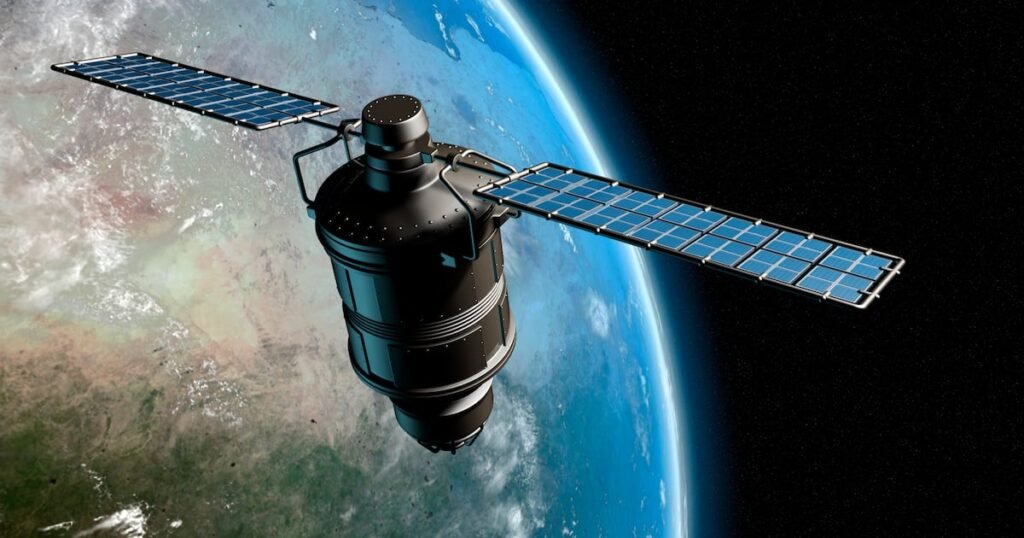EUDR and satellite data
- Data is mostly collected by the ESA’s Sentinel-1 and Sentinel-2, as well as NASA’s Landsat
- Satellites often have problems detecting small-scale deforestation and forest degradation
- Other problems remain, such as cattle laundering
- Several start-ups are working with the data to make compliance easier
EUDR compliance is important. Non-compliance can result in severe financial penalties and even restrict access to the EU market.
It is also very difficult to meet EUDR requirements, and complications around compliance have caused headaches for many hundreds of businesses since the regulation was first announced.
One way to collect data on a supply chain is getting a bird’s eye view of a sourcing location. Or, more accurately, a satellite’s-eye view.
What is the EUDR?
The European Union Deforestation Regulation (EUDR) is a regulation by the EU aiming to ensure deforestation-linked commodities do not enter the European market. It covers seven commodities – cocoa, coffee, palm oil, soy, cattle, rubber and wood – which must be traced back to their source. The land they are sourced from must not have links to deforestation before 2020.
What current tech can do
Much of the monitoring of EU deforestation is done by the Sentinel-1 and Sentinel-2 satellites, developed by the European Commission and the European Space Agency (ESA). The data from these satellites is publicly available.
Alongside these, NASA’s Landsat satellites also take part in this monitoring.
These satellites have global coverage, open data policies, and are suitable for long-term trend analysis, according to an article published in Nature.
They use data to help detection systems such as DIST-ALERT and GLAD-L detect forest disturbances, although some of these systems struggle to detect small-scale disturbances.
Sentinel-2 is good for detecting large-scale monoculture crops such as oil palm, but for commodities such as cocoa and coffee, a much higher resolution is needed.
According to the Nature article, Sentinel-1 NextGeneration (NG) and Sentinel-2NG will improve the situation of earth observation, enhancing the capability to monitor small-scale changes.
ESA missions launched through its Copernicus programme will improve the ability to map the land and differentiate commodities.
Also read → What happens when you don’t comply with the EUDR?
Another flaw in the current satellite technology is that it’s unable to track individual cattle movements. This could be a problem if producers mix non-compliant cattle into compliant herds, thereby evading detection, a process known as ‘cattle laundering’.
The article suggests using blockchain to track transfers between pastures, farms and slaughterhouses, thereby finding “hidden” transactions. Combined with satellites, which detect zones of high deforestation risk, this would make fraud more difficult.
How companies are using satellite data
A number of private sector players are also collecting Earth observation data for EUDR compliance.
LiveEO, a German software company, is one of these. Using data from Sentinel-2 satellites, the company ascertains which areas have seen deforestation since the EUDR’s 2020 cut-off date, as well as looking further back in time.
The company has made an effort to look at land-use change, rather than just deforestation, in line with the wording in the original EUDR regulation, explains senior product marketing manager Andreas Naujoks.
If trees are removed without land use conversion, he says, it creates false positives for deforestation. In some cases, trees can be removed for things such as forest health, that would not be considered deforestation.
Dutch company Satelligence is another. As well as using Sentinel-1 and 2, it uses NASA data to go further back in time, in order to get a more comprehensive picture of an area’s deforestation risk. A combination of sensors allows the company to see small-scale deforestation and degradation.
Satellite imagery is combined with Satelligence’s own field data, which it has gathered over many years.
There is still the potential for false alarms. In some ecosystems, such as the dry forest, leaves falling from trees may be detected as deforestation, suggests Nanne Tolsma, the company’s business development director.

UK company Rezatec uses neural network models to enhance resolution, thereby allowing it to detect small-scale deforestation and forest degradation.
“Our integration of neural network models enables us to sharpen Sentinel-2 imagery to 1-2 metre spatial resolutions that significantly improves our capacity to discern fine-scale changes in forest structure. This enhanced spatial detail, when paired with our data science expertise in forest inventory modelling, allows us to detect subtle signs of degradation such as selective logging or understory loss,” explains Todd Sajwaj, Rezatec’s head of research.
Cloudiness and atmospheric disturbance is a barrier in getting accurate readings, Sajwaj suggests, although this is counteracted by the frequent revisits of the satellites to the same areas.
For both Satelligence and LiveEO, demand spiked in 2024 as the EUDR’s deadline got closer, and has ticked back up again this year.

